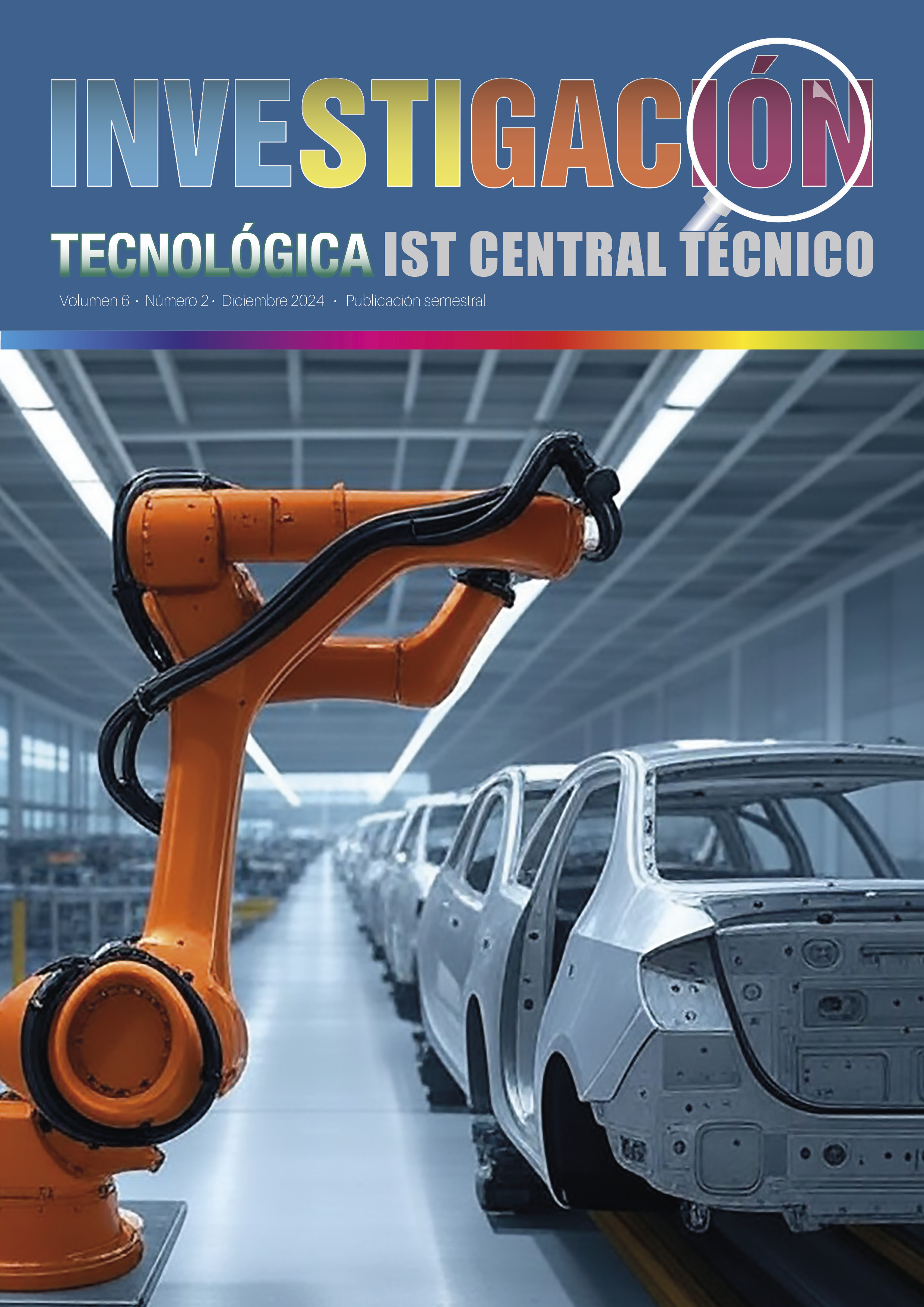el Design proposal for the pelletizing system for 5 mm diameter spheres, for the molding of recyclable PET plastic products.
Design proposal for the pelletizing system for 5 mm diameter spheres, for the molding of recyclable PET plastic products.
DOI:
https://doi.org/10.70998/itistct.v6i2.171Keywords:
PeletizaciónAbstract
This document seeks to design a pelletizing system based on the recycling of PET plastic products; in order to reduce costs and seek a more efficient national alternative that results in greater productivity in industrial processes. This is achieved by generating and validating a machine prototype with effective industrial features. To do this, with the MBD (Model-Based Design) method, a machine was designed based on the Von Mises criteria and from an economic point of view; obtaining the sizing of structural, fastening and complementary parts that entail its implementation. It was determined that the ideal material in terms of both mechanical resistance and toughness was ASTM A36, in addition to the fact that the robust appearance of the machine implies durability and compliance with loads and high operating temperatures. The role that mesh parameters play in the execution of finite element simulations was determined.
Index terms—Pelleting; PET; System; Recycling; Plastic; Molding.
References
REFERENCIAS
Arandes, J., Bilbao, J., & López, D. (2004). Reciclado de residuos plásticos. Revista Iberoamericana de Polímeros, 5(1), 28–45. http://dialnet.unirioja.es/servlet/articulo?codigo=1048871&orden=30219&info=link
Castañeda, G. (2019). Universidad Laica Vicente Rocafuerte de Guayaquil. In Gestion Financiera de las cuentas por cobrar y su efecto en la Liquidez de la Compañia Wurth Ecuador S.A.
Cespón, M. F., Castro, R. C., Curbelo, G. M., & Varela, D. C. (2015). Financial and ecological diagnosis of the supply chain for recycling plastics in the Cuban business context. Estudios Gerenciales, 31(136), 347–358. https://doi.org/10.1016/j.estger.2015.03.005
Hachi Quintana, J. G., & Rodríguez Mejía, J. D. (2010). Estudio de Factibilidad para reciclar envases plásticos de Polietileno Tereftalato(PET), en la Ciudad de Guayaquil. Universidad Politecnica Salesiana, 237. https://dspace.ups.edu.ec/bitstream/123456789/2450/20/UPS-GT000106.pdf
Jara M. (2015). Escuela politécnica nacional.
Martinez A. (2014). Diseño y fabricación de ladrillo reutilizando materiales a base de PET. In Inge Cuc (Vol. 10, Issue 2, pp. 76–80).
Martínez López, Y., Paes, J. B., & Martínez Rodríguez, E. (2018). Propiedades ignífugas de tableros de madera plástica producidos con diferentes especies forestales y termoplásticos reciclados. In Madera y Bosques (Vol. 24, Issue 2). https://doi.org/10.21829/myb.2018.2421495
Pet, R. D. P., Jose, J., & Bolaños, G. (2019).
Facultad de Ingenierías y Computación.
Riba i Romeva, Carles. (2008). Selección de materiales en el diseño de máquinas. Edicions UPC.
Rincón, L., Rodríguez, E., & Espitia, A. (2016). Madera plástica. Un producto amigo del planeta. Semilleros, 3(5), 41–48.
Roberto Moreno Gómez, D., & Álvaro Pérez Rodríguez, D. (n.d.). Escuela Ingenierías Industriales Fundación Cidaut.
Romero Estalin. (2021). ESCUELA SUPERIOR POLITÉCNICA DE CHIMBORAZO.

Downloads
Published
How to Cite
Issue
Section
License
Copyright (c) 2024 ALEXANDER PAUCAR GUALOTUÑA

This work is licensed under a Creative Commons Attribution-NonCommercial 4.0 International License.
COPYRIGHT
The ISTCT Technological Research journal is an Open Access publication, whose contents are disseminated under a Creative Commons Attribution-Non-Commercial license (CC-BY NC 4.0 International). All articles published in the ISTCT Technological Research journal are published in Open Access and are available online for free immediately after publication.
This journal provides metadata for third-party indexing services through the open files initiative.
The ISTCT Technological Research journal recognizes and respects the moral rights of the authors, as well as the ownership of the patrimonial right, which will be transferred non-exclusively to the journal to allow its legal dissemination in Open Access.
The ISTCT Technological Research journal does not reserve the rights to publish articles. Authors may distribute their own material in any other medium or medium, as long as it is for non-commercial purposes, informing the editors that the work will be published again and giving the corresponding credit to the ISTCT Technological Research journal.
Authors can make other independent and additional contractual agreements for the distribution of the article published in this journal (e.g., include it in an institutional repository or publish it in a book) as long as they clearly indicate that the work was published for the first time in "ISTCT Technological Research Magazine". In the case of reproduction, a note similar to the following must be included:
"This text was originally published in REVISTA DE INVESTIGACIÓN TECNOLÓGICA ISTCT N ° -, section -----, number of pages, year of publication."
Authors are recommended to publish their work on the Internet (for example on institutional or personal pages) in the final version published by REVISTA DE INVESTIGACIÓN TECNOLÓGICA ISTCT, as it may lead to a greater and faster dissemination of the published work (see The Effect of Open Access).
The publications in this magazine, due to their free nature, do not entitle the authors to any financial remuneration.


